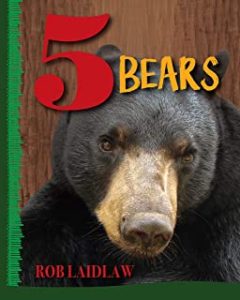CM Magazine
February 23, 2018
Bat Citizens
By Rob Laidlaw
ISBN: 978-1-77278-039-0
http://umanitoba.ca/cm/vol24/no24/batcitizens.html
Excerpt:
In the seventh grade, Oscar Scholin joined Team Chiroptera, a new Pacific Grove Middle School club that would be studying bats in the Monterey Bay area of California. As a lifelong lover of bats, Oscar jumped at the opportunity. With some expert help, Oscar and the team devised a research project to find out if bat activity was different depending on the size of their habitat in the Monterey pine ranges. They placed audio recorders in 19 pine ranges and collected 4,300 bat calls. Surprisingly, they found the size of the habitat didn’t seem to make much difference to bat activity levels. However, the team thought they might have needed additional recorders in the larger habitats as some bat calls may have been missed. Their research led to a poster presentation at the 2015 symposium of the North American Society for Bat Research. Since that time, Oscar and the team have been out with handheld bat detectors trying to determine where local bats prefer to roost and forage.
Because bats are a favorite topic for many young readers, there’s always room in the marketplace for another book, especially one that is comprehensive, based on the latest data, and written in an appealing, kid friendly style. After an “Introduction” that offers a quick outline of the book’s contents, Bat Citizens covers a broad scope within five main sections: basic bat facts, bat biology, the beneficial nature of bats, the challenges of disease and shrinking habitat, and how people can help and celebrate them (including a list of 14 ways to help, and websites of organizations devoted to bats). Supplementing the main text, “Bat Facts”, “Batty Ideas” and other sidebars add interest. Significant space is given to articles about Bat Citizens (as the title suggests), 11 young people who have turned their passion for bats into a precursor for possible science careers. A “Glossary” and “Index” complete the book.
Scientific information is presented in a direct, easy to read manner throughout, with sufficient detail to answer most questions young readers might have. In the first section, readers learn that bats may be more closely related to primates than to rodents; that mainly microbats (insect eaters) use echolocation; that roosts may be used for decades; that bats can lap nectar like hummingbirds. Under the biology heading, readers find some neat facts (including one I’ve always wondered about… “Bat’s blood doesn’t rush to their heads” due to “special one way valves in their arteries”): that bats can live over 40 years; that female bats give birth in a head upward position; that some bats cling to smooth leaves using suction disks on ankles and wrists. The third chapter deals with bats as insect control services and vital pollinators, both crucial to agriculture. Next, because bat populations are being decimated by White Nose Syndrome, readers learn about the latest research. To help with the loss of habitat or disturbance, readers read how concerned citizens are providing bat roosting boxes, prohibiting people from entering old mines and caves, and most interesting, researching ways to protect bats from wind turbines that kill millions. In the last section, readers are encouraged to welcome bats to gardens, under bridges and in old buildings. In fact, bat festivals are held in various communities to enhance public awareness. Since bats have long been given a bad rap, everything in this book is aimed at dispelling the myths.
One amazing story describes Bracken Cave in Texas, a major tourist attraction where about 20 million roosting Mexican free tailed bats pour out each evening for hours. It is such a spectacle that conservation groups purchased the surrounding property to prevent disturbance and development. Besides being the topic of a fascinating, well told story, this location offered one example of how young Bat Citizens have found ways to volunteer and learn more. The book profiles 11 kids, starting as young as four, with life long interests in bats and ambitions to be involved in the solutions to their conservation. Arming these kids with today’s technology is resulting in new data collection. They are terrific ambassadors whose dedication to the cause will inspire readers to think about their own interests and aspirations in science fields.
The orderly layout of the book will engage readers and leave a strong impression. The main text, with large bold subheadings, occupies the centre of each double-spread, framed on each side and along the bottom with many well chosen, captioned photos and sidebars. An exciting surprise awaits mid book: a huge foldout diagram of a Hoary Bat with key body parts labelled. The same poster graces the reverse of the cover. That cover, by the way, is striking for its matte black finish with glossy silhouettes and large bat flying towards you. This is a most visually appealing book! Bat Citizens’ contents should readily satisfy the bat curious.
Highly Recommended.
Gillian Richardson is a freelance writer living in BC.

